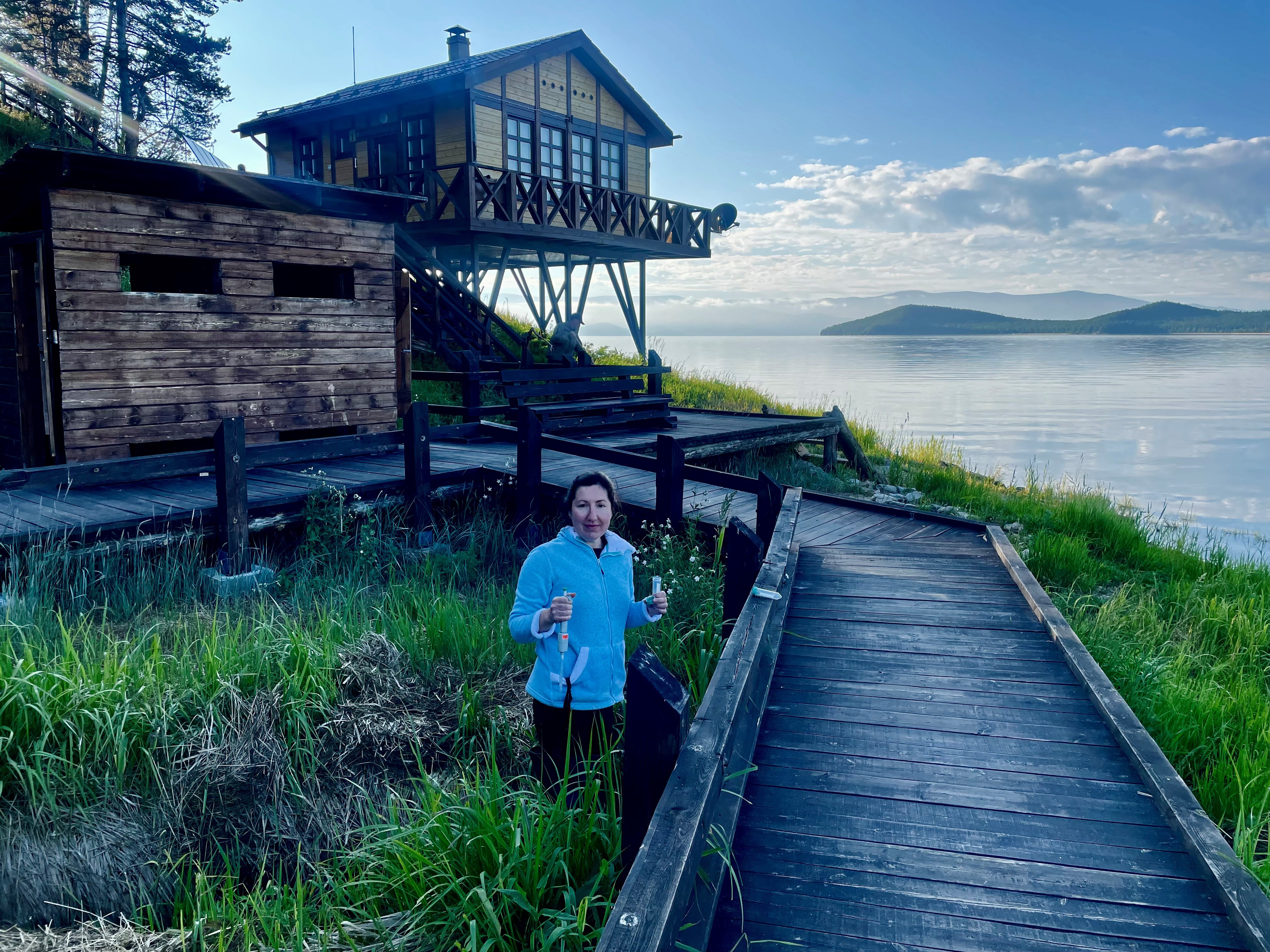Expedition on board the RV “G. Yu. Vereshchagin” from 09 to 16 July 2022
The expeditionary works were carried out on board the RV “G.Yu. Vereshchagin” in Central and Northern Baikal within the State Assignments 0279–2021–0006 “Studies of functioning of hydrate, oil and gaseous hydrocarbon systems and associated microbial communities in Lake Baikal” (directed by T. Zemskaya), the works contained the areas of discharges of gas-containing fluids, formation of iron-manganese crusts and nodules as well as onshore thermal sources.
The aim of the expedition was to study the structure of microbial communities and establish a role of microorganisms in the formation and transformation of hydrocarbons (gaseous and petroleum) using a complex of methods including a high-throughput sequencing of the variable sites of 16S rRNA genes of bacteria and archaea, to obtain accumulative cultures for further genomic analysis, to search the habitats of colorless sulfur bacteria of genera Thiotrix and Thioploca, to study sanitary-significant bacteria in water of the onshore thermal spring and in the coastal zone of Zmeinaya Bay (Northern Baikal).
The planned expeditionary works were completed at 51 stations. Sampling of the bottom sediments, chemical composition of pore water and methane concentrations were measured with gravity corers of 3 and 5 m length as well as with a bucket grab. Forty-eight cores were sampled using a gravity corer. Lithological description of the bottom sediments was performed for each core. Methane concentrations were revealed in 335 bottom sediment samples and 5 bottom water samples. The chemical composition of pore water was studied in more than 100 bottom sediment samples.
Twenty-two samples of the bottom sediments were collected using a bucket grab in the area of formation of iron-manganese crusts and nodules (near Bolshoi Ushkany Island) for further DNA isolation and high-throughput sequencing of the variable sites of 16S rRNA genes of bacteria and archaea. More than 30 samples of crusts and nodules obtained in the taken sediments of this area will be used to isolate the ancient DNA, chemical and mineral composition as well as to determine their age. In the bucket grab raised in the shallow zone of the Kharauz Channel, samples of colorless sulfur bacteria of genus Thioploca were collected for DNA isolation. PH, Eh, T, and oxygen content were measured to study the ecology of this species.
Near the hot spring of Zmeinaya Bay, we sampled the mats of colorless sulfur bacteria Thiothrix to obtain a pure culture and study the morphology and intracellular structure of cells. Water samples were taken to assess the sanitary-microbiological water quality from two bathing-places and the coastal zone of the hot spring of Zmeinaya Bay. Changes in the microbiome of the hot spring are evaluated after tourists' bathing.
Monitoring works were continued to determine changes in the number of hydrocarbon-oxidizing microorganisms and concentration of n-alkanes and PAHs in the water samples and bottom sediments at 6 stations in the area of oil show at the mouth of the Bolshaya Zelenovskaya River. To determine the role of thermophilic hydrocarbon-oxidizing microorganisms in the processes of oil biodegradation, which can take place at temperatures typical for deep sediments, the experiment with three samples of the bottom sediments in anaerobic conditions on nutrient media containing oil and various acceptors of electrons was carried out. Experiments for cultivation of methanogenic archaea with atypical metabolism and determination of substrate specificity of methanogenesis in the bottom sediments of the oil show area near the mouth of the Bolshaya Zelenovskaya River were started.
At mud volcano K-2, the samples of authigenic siderites, for which noted enrichment with isotope 13С from +17.7 to +21.9%, were obtained. To further establish the taxonomic diversity of microbial communities of carbonate layers and compare with the results obtained at mud volcano K-9, where the formation of isotopically "light" authigenic siderites was noted, 9 samples of the bottom sediments for isolation of the total DNA were taken.
Samples of iron-manganese crusts and nodules and authigenic siderites will be examined by a scanning electron microscopy to determine the elemental composition.
Samples of the bottom sediments from the areas of mud volcano K-2 and Bolshoy Ushkany Island were used to cultivate microorganisms of the phylum Planctomycetota and to establish their role in the nitrogen and carbon cycles on media with the addition of mono- and polysaccharides as additional sources of carbon and energy.













